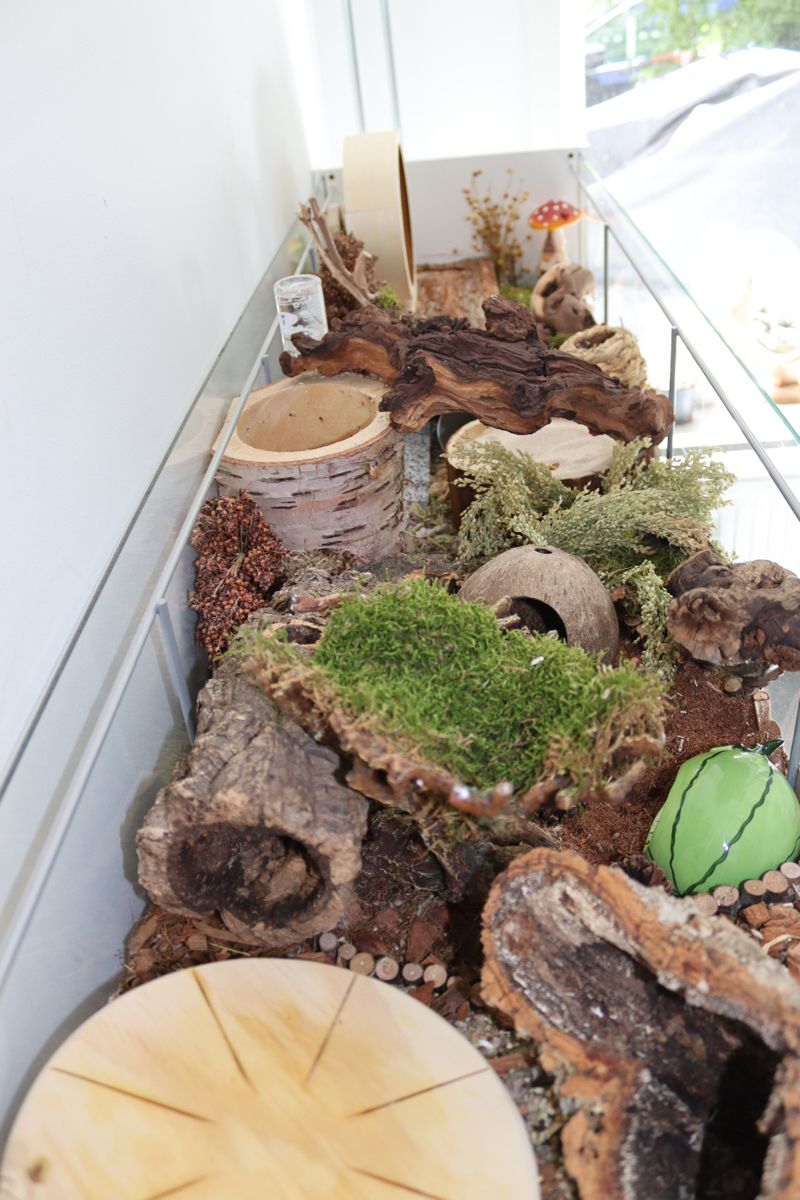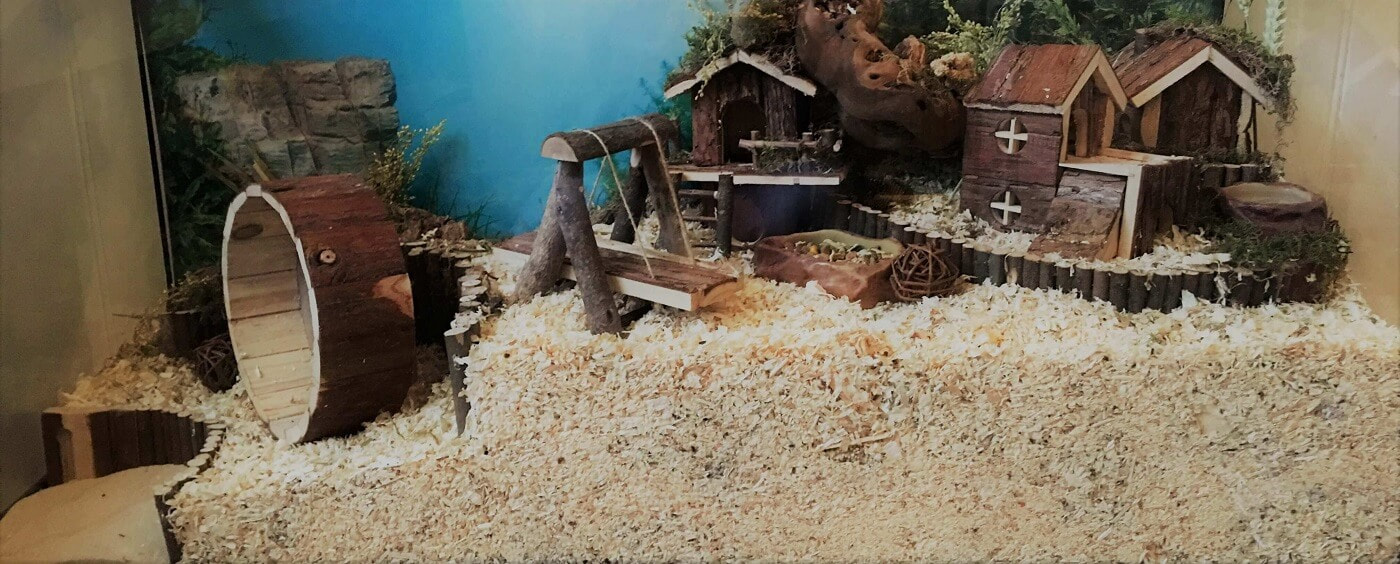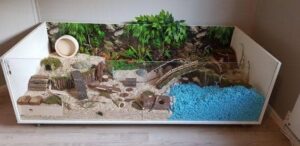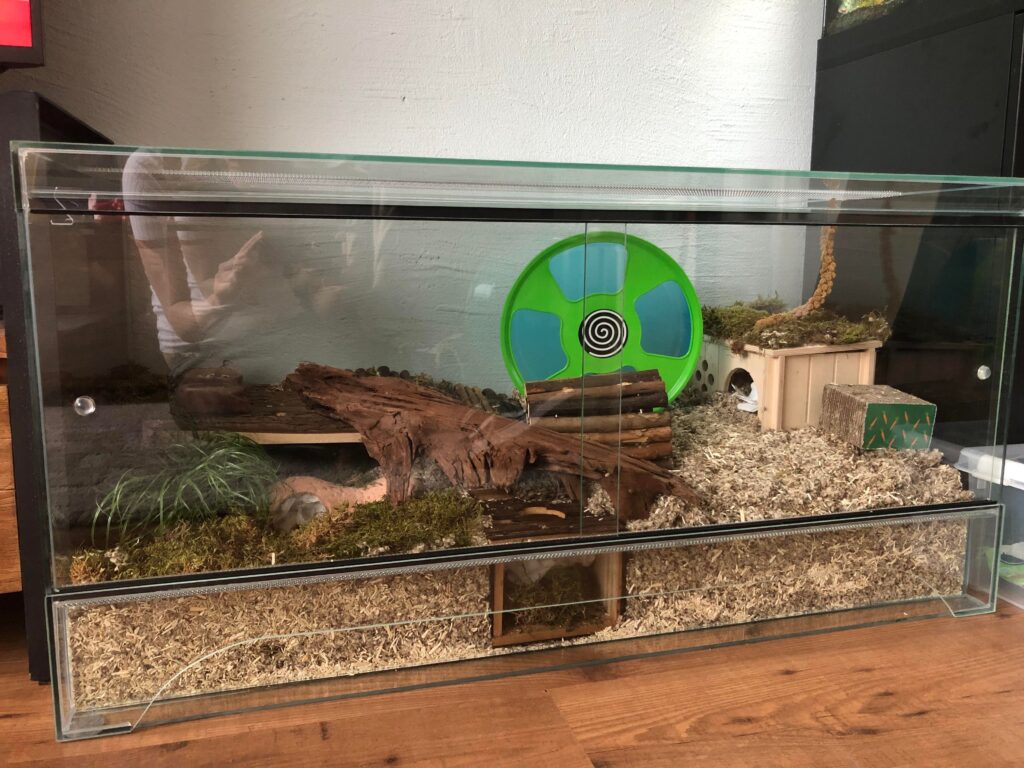General Information:
Though they’re certainly small, Chinese hamsters are not considered true dwarf hamsters. As their name suggests, Chinese hamsters originate from China and Mongolia.
They have an average lifespan of 2 – 2 ½ years, but ages of up to 4 years have been reported.
Chinese hamsters are nocturnal omnivores and make wonderful pets. Their care doesn't differ too much from that of other, more common domesticated species of hamster. Chinese hamsters are uncommon pets as most pet stores don't sell them.
Care:
Housing/Enrichment:
Cage dimensions should be roughly L 100cm x W 50cm.
Be mindful of bar spacing, Chinese hamsters can easily squeeze through small gaps. Safer alternatives include Dunas, ZooZones, or glass tanks. We prefer the glass tank option as it offers more opportunities for burrowing.
As Chinese Hamsters enjoy burrowing, you need to provide a deep layer of suitable substrate for your hamster.
Provide plenty of toys and enrichment for your hamster. A solid-floored wheel approximately 28cm in diameter will provide your hamster with plenty of exercising opportunity. Secure housing, wooden bridges, chew toys, and tunnels are also great forms of enrichment.
Ideal temperatures for Chinese hamsters are approximately 18°C - 23°C, but this can vary depending on circumstances.
Hamsters are permissive hibernators and at temperatures around 4c may enter torpor.
Useful Links:
Though they’re certainly small, Chinese hamsters are not considered true dwarf hamsters. As their name suggests, Chinese hamsters originate from China and Mongolia.
They have an average lifespan of 2 – 2 ½ years, but ages of up to 4 years have been reported.
Chinese hamsters are nocturnal omnivores and make wonderful pets. Their care doesn't differ too much from that of other, more common domesticated species of hamster. Chinese hamsters are uncommon pets as most pet stores don't sell them.
Care:
Housing/Enrichment:
Cage dimensions should be roughly L 100cm x W 50cm.
Be mindful of bar spacing, Chinese hamsters can easily squeeze through small gaps. Safer alternatives include Dunas, ZooZones, or glass tanks. We prefer the glass tank option as it offers more opportunities for burrowing.
As Chinese Hamsters enjoy burrowing, you need to provide a deep layer of suitable substrate for your hamster.
Provide plenty of toys and enrichment for your hamster. A solid-floored wheel approximately 28cm in diameter will provide your hamster with plenty of exercising opportunity. Secure housing, wooden bridges, chew toys, and tunnels are also great forms of enrichment.
Ideal temperatures for Chinese hamsters are approximately 18°C - 23°C, but this can vary depending on circumstances.
Hamsters are permissive hibernators and at temperatures around 4c may enter torpor.
Useful Links:
- hamsters-uk.org/chinese-hamster/
- www.amazon.co.uk/Ferplast-Maxi-Multy-Guinea-Rabbit/dp/B00F5ZZ2R6/ref=asc_df_B00F5ZZ2R6/?tag=googshopuk-21&linkCode=df0&hvadid=256266127181&hvpos=&hvnetw=g&hvrand=6941655704093360657&hvpone=&hvptwo=&hvqmt=&hvdev=c&hvdvcmdl=&hvlocint=&hvlocphy=1006648&hvtargid=pla-423165533217&psc=1&th=1&psc=1
- www.ikea.com/gb/en/p/detolf-glass-door-cabinet-white-80269122/
- www.miscota.co.uk/small-animals/trixie/plastic-exercise-wheel?r=4047974610114&gclid=CjwKCAjw_o-HBhAsEiwANqYhp1UnPmH8-szKMlBXIYJ1GFvd-n7FuHdUqYf2ORgxMpcmj8i-y4wsERoCJSwQAvD_BwE
Diet:
As Chinese hamsters are omnivores, we feed ours on a diet suitable for dwarf hamsters as they're lower in sugar.
It's common for Chinese hamsters to develop diabetes and they have been documented to develop spontaneous disease. Diabetes is characterized by above-normal glucose levels present in the blood which can lead to severe health consequences. Please remember that sugar doesn't directly cause diabetes. To prevent diabetes, your hamster should maintain a healthy weight and active lifestyle.
We’ve not seen a commercially available diet for specifically for Chinese hamsters to date, and little research appears to be done on their nutritional requirements.
Useful Links:
Socialising:
Chinese hamster temperaments varies depending on the individual, but for the most part, they’re handleable and can often be tamed.
There is controversy amongst experts regarding cohabiting Chinese hamsters. In our opinion, it highly depends on the individuals.
Chinese hamsters are notoriously unpredictable towards their own kind. If you do happen have a cohabiting pair, we would advise that you’re prepared for a situation which may involve permanently separating your hamsters. Although, we do not think it is necessary to separate them if they’re peacefully cohabiting.
Don't cohabit, or seek cohabiting Chinese hamsters if you’re an inexperienced owner.
Common Diseases:
Chinese hamsters are prone to the same issues as many other species of hamster seen in the pet trade. Here are a few of the common diseases:
Please feel free to ask more questions.
As Chinese hamsters are omnivores, we feed ours on a diet suitable for dwarf hamsters as they're lower in sugar.
It's common for Chinese hamsters to develop diabetes and they have been documented to develop spontaneous disease. Diabetes is characterized by above-normal glucose levels present in the blood which can lead to severe health consequences. Please remember that sugar doesn't directly cause diabetes. To prevent diabetes, your hamster should maintain a healthy weight and active lifestyle.
We’ve not seen a commercially available diet for specifically for Chinese hamsters to date, and little research appears to be done on their nutritional requirements.
Useful Links:
- www.zooplus.co.uk/shop/small_pets/food/bunny_food/hamster_food_bunny/620085?mkt_source=1334735&variantid=620085.0&gclid=CjwKCAjw_o-HBhAsEiwANqYhp1dXhuo2EUeLIAtR4RULrgGLEyc2EuPQaaynrK8bTQsF2yG32k6UPBoCJsAQAvD_BwE
- www.rodipet.co.uk/pet-foods/rodipet-organic-dwarf-hamster-food-junior-500g.html
- www.rodipet.co.uk/pet-foods/rodipet-organic-dwarf-hamster-food-senior-500g.html
- www.tinypawsmcr.org.uk/product/dwarf-hamster-mix-500g/
Socialising:
Chinese hamster temperaments varies depending on the individual, but for the most part, they’re handleable and can often be tamed.
There is controversy amongst experts regarding cohabiting Chinese hamsters. In our opinion, it highly depends on the individuals.
Chinese hamsters are notoriously unpredictable towards their own kind. If you do happen have a cohabiting pair, we would advise that you’re prepared for a situation which may involve permanently separating your hamsters. Although, we do not think it is necessary to separate them if they’re peacefully cohabiting.
Don't cohabit, or seek cohabiting Chinese hamsters if you’re an inexperienced owner.
Common Diseases:
Chinese hamsters are prone to the same issues as many other species of hamster seen in the pet trade. Here are a few of the common diseases:
- Cheek Pouch Impactions/Prolapses: Hamsters use their cheek pouches to store a variety of items such as food and bedding. Unfortunately, this means they can become impacted and, if left untreated, can actually rupture. Usually, a general anaesthesia is advised to flush and empty the cheek pouches. If there is evidence of abrasions and infection, they may require a course of antibiotics too. It’s very important you seek medical attention if you suspect your hamster may have prolapsed their cheek pouches.
- Antibiotic Associated Diarrhoea and Enterotoxemia: Hamsters can suffer from adverse reactions when using antibiotics because their gut flora is predominantly gram-negative. Diarrhoea and enterotoxemia (A condition induced by the absorption of large volumes of toxins produced by bacteria such as Clostridium perfringens from the intestines) can lead to more severe disease and even death. It’s vital your veterinarian is experienced and knowledgable about treating hamsters.
- Neoplasias: Hamsters seem particularly prone a number of cutaneous tumours such as melanomas, melanocytomas, and epitheliotropic lymphoma, and gastrointestinal tumours such as squamous papilomas and adenomas. Histopathology may be required to determine what tumour a hamster may have developed, and the prognosis and treatment required.
Please feel free to ask more questions.




